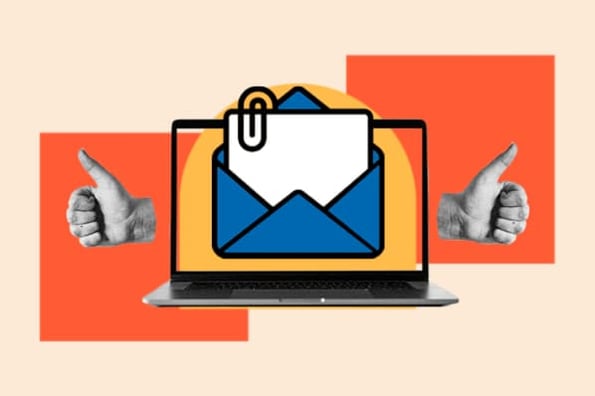Storytelling and emotional triggers are powerful tools in email marketing that can captivate your audience, foster connections, and drive engagement. By weaving compelling narratives and tapping into emotions, you can craft email copy that not only grabs attention but also motivates recipients to take action. Here’s how you can effectively use storytelling and emotional triggers to create persuasive email copy.
The Power of Storytelling in Email Marketing
Storytelling transforms your email from a simple communication into a compelling narrative that resonates with your audience. A well-crafted story can make your email memorable, foster emotional connections, and enhance the overall effectiveness of your message.
Understanding Your Audience’s Needs and Desires
Before you begin crafting your story, it’s crucial to understand the needs, desires, and pain points of your audience. Conduct research to gain insights into what motivates them, what challenges they face, and what solutions they are seeking. This understanding will help you create a story that is relevant and appealing to your readers.
Crafting a Relatable Narrative
To create a compelling story, start by crafting a narrative that your audience can relate to. This could be a story about overcoming challenges, achieving success, or experiencing a transformation. Use real-life examples or case studies that reflect the experiences and aspirations of your audience. When your readers see themselves in the story, they are more likely to engage with your message and take action.
Incorporating Emotional Triggers
Emotional triggers are powerful elements that can evoke strong feelings in your audience. By tapping into emotions such as joy, fear, empathy, or excitement, you can create a more impactful and memorable email. Identify the emotions that align with your message and use them strategically to connect with your audience on a deeper level.
Using a Strong Hook
A strong hook is essential for grabbing attention and drawing readers into your story. Start your email with a captivating opening that piques curiosity or highlights a key pain point. A compelling hook sets the stage for the rest of your narrative and encourages recipients to continue reading.
Building a Story Arc
Every good story has a clear structure, often referred to as the story arc. This typically includes an introduction, a problem or conflict, a resolution, and a conclusion. Apply this structure to your email copy to create a cohesive and engaging narrative. Start by introducing the context, present the challenge or conflict, show how it was resolved, and end with a powerful conclusion or call-to-action.
Creating Emotional Resonance
To create emotional resonance, focus on the feelings and experiences of your audience. Use descriptive language and vivid imagery to evoke emotions and paint a picture of the scenario you’re describing. Share stories that highlight the benefits and positive outcomes of your product or service, and show how it can make a difference in the lives of your readers.
Incorporating Personal Stories
Personal stories can be especially effective in email marketing as they add authenticity and relatability to your message. Share anecdotes or experiences from your own life or the lives of your team members. Personal stories help humanize your brand and build trust with your audience.
Addressing Pain Points and Providing Solutions
Incorporate elements of your audience’s pain points and present your product or service as the solution. Highlight the challenges your audience faces and show how your offering can address these issues. By demonstrating empathy and providing a solution, you can create a sense of urgency and motivate recipients to take action.
Utilizing Testimonials and Success Stories
Testimonials and success stories are powerful forms of social proof that can enhance the credibility of your email copy. Include quotes or stories from satisfied customers who have experienced positive results with your product or service. These endorsements provide validation and help build trust with your audience.
Crafting a Compelling Call-to-Action
A compelling call-to-action (CTA) is essential for driving the desired response from your readers. Ensure that your CTA is clear, specific, and aligned with the story you’ve told. Use action-oriented language and emphasize the benefits of taking action. Make it easy for recipients to follow through by providing a direct link or clear instructions.
Maintaining Consistency with Your Brand Voice
Your storytelling and emotional triggers should align with your brand voice and messaging. Consistency is key to building a cohesive and recognizable brand identity. Ensure that the tone, style, and language used in your email copy reflect your brand’s values and personality.
Testing and Refining Your Email Copy
To optimize the effectiveness of your storytelling and emotional triggers, test different versions of your email copy. A/B testing can help you determine which elements resonate best with your audience. Analyze the results to identify what works and make adjustments to improve your email performance.
Examples of Effective Storytelling in Email Marketing
To illustrate the power of storytelling in email marketing, consider examples from successful campaigns. For instance, an email from a travel company might share a story about a customer’s unforgettable vacation experience, highlighting the emotional impact and excitement of the trip. Another example could be an email from a nonprofit organization that tells the story of an individual who benefited from their support, creating an emotional connection and encouraging donations.
Leveraging Emotional Triggers for Different Objectives
Different emotional triggers can be used to achieve various objectives in your email marketing campaigns. For instance, if your goal is to generate excitement about a new product, focus on emotions such as anticipation and enthusiasm. If you’re aiming to build trust and credibility, emphasize emotions like empathy and reassurance. Tailor your emotional triggers to align with your specific objectives and audience preferences.
Ensuring Relevance and Value
While storytelling and emotional triggers are powerful, it’s important to ensure that your email copy remains relevant and valuable to your audience. Avoid using emotional triggers in a way that feels manipulative or disingenuous. Ensure that your story and messaging provide genuine value and address the needs and interests of your readers.
Maintaining a Balanced Approach
Balance is key when using storytelling and emotional triggers in your email copy. While emotions can be powerful, avoid overwhelming your audience with excessive sentimentality. Combine emotional elements with clear, actionable information to create a well-rounded and effective email.
Utilizing Data to Inform Your Storytelling
Use data and insights to inform your storytelling approach. Analyze previous email campaigns to identify which stories and emotional triggers have resonated most with your audience. Use this information to refine your storytelling strategies and create more compelling and impactful email copy.
Building Long-Term Relationships with Storytelling
Storytelling can help build long-term relationships with your audience by creating a sense of connection and engagement. Share ongoing stories that reflect the experiences and values of your brand. By maintaining a consistent narrative and engaging with your audience over time, you can foster loyalty and strengthen your relationship with your subscribers.
Using storytelling and emotional triggers in your email marketing can significantly enhance the effectiveness of your campaigns. By crafting relatable narratives, tapping into emotions, and providing genuine value, you can create compelling email copy that resonates with your audience and drives engagement. Continuously test and refine your approach to ensure that your storytelling strategies align with your brand and objectives. With the right techniques, you can create memorable and persuasive email content that captivates your readers and motivates them to take action.
FAQs
What is storytelling in email marketing, and why is it important?
Storytelling in email marketing involves crafting a narrative that engages readers and connects with them on an emotional level. It’s important because it makes your email content more memorable, relatable, and persuasive, which can drive higher engagement and conversions.
How can I identify the right emotional triggers for my email campaigns?
Identify emotional triggers by understanding your audience’s needs, desires, and pain points. Use customer feedback, surveys, and data analysis to determine what emotions resonate most with your target audience. Tailor your email content to address these emotions effectively.
What are some examples of emotional triggers to use in email marketing?
Emotional triggers can include feelings of joy, fear, empathy, excitement, and urgency. For example, you might use excitement to promote a new product launch, or empathy to address customer pain points and offer solutions.
How can I ensure my storytelling aligns with my brand voice?
Ensure that your storytelling aligns with your brand voice by maintaining consistency in tone, style, and language. Your story should reflect your brand’s values and personality while staying true to your overall messaging strategy.
What are some best practices for crafting a compelling call-to-action in email marketing?
A compelling call-to-action (CTA) should be clear, specific, and action-oriented. Use language that emphasizes the benefits of taking action and make it easy for recipients to follow through with a direct link or clear instructions.




















.jpg)
.jpg)

